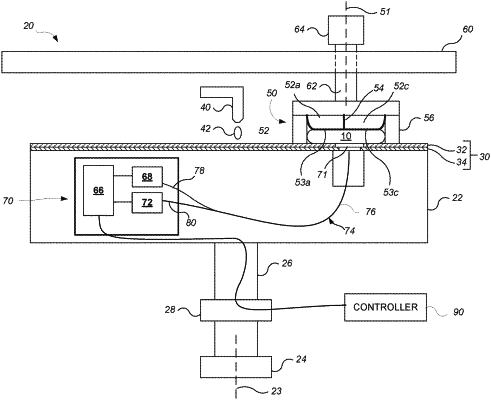| CPC B24B 37/005 (2013.01) [B24B 49/006 (2013.01); B24B 49/12 (2013.01); B24B 49/16 (2013.01); G05B 13/041 (2013.01); G05B 13/047 (2013.01)] | 19 Claims |

|
1. A computer program product for generating a recipe for controlling a polishing system, the computer program product encoded on a non-transitory computer readable medium and comprising instructions for causing one or more computers to:
receive a target removal profile that includes a target thickness to remove for a plurality of locations on a substrate that are angularly distributed around a center of the substrate;
store a first function defining a polishing rate for a zone from a plurality of pressurizable zones of a carrier head that are angularly distributed at different angular positions around a center of the carrier head, the first function defining the polishing rate for the zone as a function of one or more pressures of one or more zones from the plurality of pressurizable zones of the carrier head; and
for each particular zone of the plurality of zones, calculate a recipe defining a pressure for the particular zone over time, wherein the instructions to calculate the recipe include instructions to calculate an expected thickness profile after polishing using the first function, and to minimize a cost function that incorporates a first term representing a difference between the expected thickness profile and a target thickness profile, wherein an output of the minimization of the cost function is a scalar quantity representing a summed removal error.
|